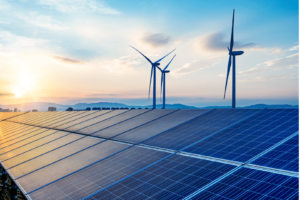NERC compliance is a puzzle even for experienced solar developers and owners. In Part One of our four-part series, we covered the top mistakes solar developers make when it comes to NERC. Now, let’s move on to NERC registration.
How do you know if your solar project will have to register with NERC?
All solar facilities that are part of the Bulk Electric System (BES) must register with NERC. There is a well-defined set of requirements:
- First, the solar facility must be interconnected at 100 kV or higher. This rule set is the same for PV, wind or spinning generation.
- Second, there must be either a:
- Single generation unit (i.e., an inverter or wind, combustion or hydro turbine) that is 20 MVA or higher
- Group of generating units that are less than 100 MVA that equal 75 MVA or greater
Broken down, this means that if you’re building a solar farm large enough to interconnect at the transmission level (100 kV or higher)—and you have enough production capacity to have greater than 75 MVA behind that interconnection—you are considered BES and must work into the NERC system. You must register and follow the procedures.
NERC Registration Is a Bright-Line Rule
NERC is different from working with local governments or other entities that allow some negotiating room. There is no way to pass. There is no appeals process. You can’t make a deal with NERC. If you have 75 MVA or more, you must register and follow NERC requirements—it’s a bright-line rule.
Getting close to that 75 MVA line can have ramifications, too. You can plan for 74.9 only to have the inverters selected for the project bump you over the line. While not typical with solar, your regional entity may decide to register you into NERC anyway if they consider you too close to the threshold. ISOs and utilities must meet NERC requirements and may not want the risk of having a non-compliant plant participating in their program. You should have these conversations with your regional entity early in the development process.
Who is responsible for NERC registration?
Some solar project developers or owners believe that somebody else in the organizational stack is responsible for NERC registration: the transmission owner, reliability coordinator or scheduler, for example. That is incorrect.
The owner is responsible for NERC registration. There is typically an owner LLC that owns the equipment and the Interconnection Agreement (IA)—that is the organization that must register.
There are six major categories for registered organizations in NERC, each with corresponding requirements:
- Generator Owner (GO) – Owns and maintains the facility or contract
- Generator Operator (GOP) – Typically the O&M provider; handles the day-to-day operations of the facility
- Transmission Owner (TO) – Owns the transmission system
- Transmission Operator (TOP) – Operates the transmission system
- Reliability Coordinators (RC) – Control rooms in charge of grid reliability at a state or utility level
- Balancing Authorities (BA) – Control rooms trying to actively balance the load and supply of power
Site owners must register as a GO and either meet the GO standards themselves or ensure someone else does through policies and procedures. Owners who handle operations in-house—rather than contracting out to an O&M provider—must handle GOP requirements as well.
At what point during solar project development do you have to register with NERC?
You must register with NERC on the Commercial Operation Date (COD)—when the site is fully commissioned, online, and able to begin selling power under the terms of its Power Purchase Agreement (PPA) or IA. You must be NERC ready and wholly compliant on that date.
This is a common area of confusion. Many solar project developers think they must register a year in advance, during construction, or when they get back feed of the facility. You register at COD.
Continue learning about NERC compliance.
In Part Three of this four-part series, you’ll find out how to determine which NERC standards may apply to a solar project. We’ll dip a toe into NERC CIP—a large group of standards covering cyber security.
We are a trusted partner for full NERC implementation and long-term compliance management. See our Compliance and Risk Management page for more on how we can help.





